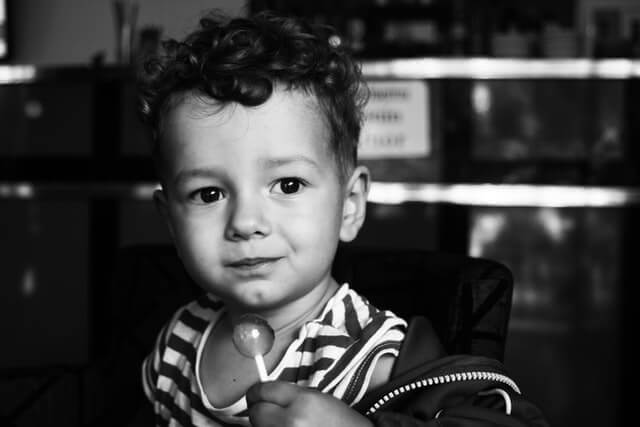
Table of Contents
Curious about positive reinforcement and whether it’s the right choice for your autistic child?
By reading this article, you will know why positive reinforcement benefits children with autism spectrum disorder (ASD), what its processes involve, and what you could do to help your son or daughter get the best treatment outcomes.
What is positive reinforcement?
Positive reinforcement is part of applied behavior analysis (ABA) therapy, which is the most common method for treating autistic children. ABA therapy revolves around using rewards and incentives to motivate kids with ASD to act in a desirable way and, at the same time, avoid problematic behaviors.
Through utilizing positive reinforcement, an ABA therapist would reward your autistic son or daughter for listening to you (as their parent), behaving in a certain manner, and/or avoiding undesirable actions.
This reward could be anything that incentivizes your child to positively respond to this technique, whether it’s an object or activity.
For example, the therapist may motivate your kid to finish their homework by allowing them to play with their toys or watch their favorite TV show after they do so.
The simplest method for motivating your child is through verbally praising them. Meanwhile, the most intrusive approach is one that involves their meals and food.
At the end of the day, your objective is to find a reinforcer that enables your kid to reach their behavioral goals.
What is the importance of positive reinforcement in autism?
Positive reinforcement is important because it helps children with ASD learn a variety of new skills and improve their existing capabilities, such as the following:
- Academic Performance
- Adaptive Learning Skills
- Functional Life Skills
- Non-Verbal Communication
- Social Interactions
- Verbal Communication
To get the best results from positive reinforcement on a regular basis, you want to make sure that you consistently reward your child with a reinforcer whenever they act or behave in a desirable way.
Equally important is that positive reinforcement is also useful for preventing and minimizing bad habits (aggression, to give an example).
However, before you implement any reinforcement techniques, you should initially get the advice and guidance of a licensed ABA therapist.
How ABA Therapists Use Positive Reinforcement
ABA therapists rely on the ABC model for behavior modification. In fact, this is one of the cornerstones of ABA therapy.
In short, an ABA practitioner would observe your son or daughter’s behaviors and identify the triggers and environmental factors that influence them. Next, organize what they see into patterns of improvement.
To illustrate, the ABC model entails the following steps:
- Antecedent: Firstly, the therapist pinpoints the specific situation or item that led your autistic child to behave a certain way, such as bright lights or loud noises.
- Behavior: After that, the practitioner looks at your kid’s reaction to the antecedent, which may be positive or negative.
- Consequence: This is what the behavior resulted in. The consequence could be positive (to encourage good habits) or negative (to prevent problematic actions).
Once you understand how to use the ABC model, you can start implementing positive reinforcement methods in more detail.
The Process of Positive Reinforcement
There are four key steps that make up the positive reinforcement process.
Identify Needs
Initially, you want to look at your autistic son or daughter’s current behavioral, academic, social, and other skills. From there, find the areas that you would like to see them improve in.
When you do so, discuss your child’s needs and goals with an ABA therapist so that they build an appropriate behavioral treatment program for your boy or girl.
ABA practitioners usually apply positive reinforcement techniques in a systematic way to teach your kid new skills.
Choose Reinforcers
You want to pick the reinforcements and rewards that yield the best results. A lot of this can be discovered through trial and error.
Start by choosing the least intrusive reinforcers and, based on your child’s responses, move to the more intrusive ones until you define the most effective rewards.
A secondary reinforcer is also helpful. As an example, you could tell your boy or girl “good job” (as a secondary reward) while you hand them a piece of candy (which would be the main reinforcer).
Measure Success
You want to make sure that you measure your child’s success over time. Here are some goals and objectives that you can track:
- Have they improved academically and did their grades get better?
- Are they making new friends or participating in social activities more often?
- Did your autistic kid’s problematic behaviors fade away after they began to attend ABA therapy sessions?
- Is your child getting better at communicating and expressing themselves?
Needless to say, you could also measure other objectives that are important to you and your child. This helps you evaluate the effectiveness of their ABA treatment and the therapist’s positive reinforcement techniques.
When your son or daughter develops new skills and enhances their existing ones, the therapist may make it more difficult for them to get rewarded. This will challenge the kid in a healthy way and motivate them to further grow their capabilities.
Working Together
Above all, parents, caretakers, and therapists must all work together on implementing positive reinforcement methods and encouraging desirable habits.
Keep in mind that you can get the most out of your child’s ABA sessions through a collaborative effort. In other words, it is the most efficient way for assisting your kid in reaching their goals.
The Ethicality of Positive Reinforcement
While certain ABA programs are controversial, professionals who treat boys and girls with ASD generally agree that positive reinforcement is the best and most ethical type of ABA therapy.
This is because it revolves around rewards and positive encouragement.
Negative Reinforcement and Punishment
As an alternative form of ABA treatment, negative reinforcement entails taking away an object or ending an activity when your child behaves in an undesirable manner.
To clarify, here is an example of how negative reinforcement is used:
- The autistic kid demonstrates that they don’t like a specific item, activity, or sense. For instance, when the TV volume is too loud, the child may cover their ears and point towards the remote.
- In response, the therapist or parent utilizes negative reinforcement approaches to remove the problematic element. In our above example, they would turn down the volume.
- After that, the child gets comfortable again. They will also learn that covering their ears and/or pointing at the remote is the best way to express that they’re uneasy with the volume (as opposed to shouting or getting aggressive).
As illustrated above, negative reinforcement is not a form of punishment. Instead, it’s a technique for teaching your autistic son or daughter new habits and communication skills.
Aversive Reinforcement
This is arguably the most controversial ABA approach.
Simply put, through aversive reinforcement, an autistic kid is exposed to physically and/or psychologically uncomfortable situations. In turn, they are expected to learn how to avoid bad behaviors and embrace positive ones.
Since this method is similar to punishing a child, it is very uncommonly used today. Instead, ABA practitioners and professionals who work with autistic kids mainly rely on positive reinforcement.
Need an ABA therapist in New Jersey?
Golden Care Therapy is an in-home ABA therapy provider that serves autistic children and their families in New Jersey.
Our team of experienced and licensed experts will put together a custom plan for your child while working with the entire family on implementing it at home and in school.
After all, the best therapy results are achieved through a collaborative effort.
Here at Golden Therapy, we’re all about conducting ABA therapy together.
Let us help you. Click here to contact us and get in touch!
If you are ready to work with the best ABA therapy provider in New York, New Jersey or Indiana, give us a call at (732) 402-0297. Our dedicated team is ready to help and we will treat you like family.
- Autism Routine Disruption in Adults: Coping Tips - July 16, 2024
- Autism and Obsession: An Overview - July 16, 2024
- Autism and Taking Clothes Off: Management Tips - July 16, 2024



